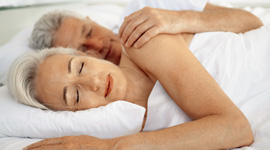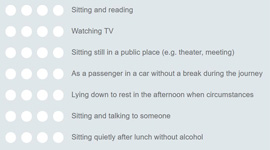Questions and answers
Are there side effects?
In the days following treatment, there may be a foreign body sensation, minor swelling, as well as slight pain in the treated areas. Snoring may also become heavier in the first few days following treatment.
What must I bear in mind after the CELON procedure?
You should avoid strenuous activity for several days after the procedure. Otherwise, there are no restrictions on your regular daily routine. Follow-up visits should be planned in consultation with your ENT.
Who performs the CELON treatment?
The treatment is performed by established ENT physicians and clinicians who are specialized in the CELON treatment. For more information, call the toll-free hotline or check out our contact page.
How long does it take for the procedure to take effect?
The procedure generally begins to take effect within a few days, with full effect after three weeks or so.
Is the treatment painful?
The treatment is generally performed under local anaesthetic, so you won't feel anything during the procedure. After the treatment, a foreign body sensation in the treated areas can occur.
What is the CELON method?
Bipolar radio frequency-induced thermotherapy (RFITT), also called the CELON method, is a procedure for minimally invasive, thermal treatment of tissue using bipolar radio frequency current. The effect can be precisely controlled and is strictly limited to the tissue area under treatment. The tissue surface (mucus membrane) is protected and the organ function of lymphatic tissue is retained.
What is Polysomnography?
Polysomnography (PSG) is the simultaneous recording of various sleep data in a polysomnogram during the course of an overnight sleep study: brain waves, cardiac rhythm, breathing, muscle tone, blood oxygen level, body movements, inspiratory pressure. Frequently, a screening study takes place prior to the PSG, which the patient can perform wearing a portable device at night at home (pulse oximetry, respiratory polygraphy).
What is OSAS?
OSAS is the abbreviation for obstructive sleep apnea syndrome. Apnea refers to breathing arrest of more than ten seconds during sleep, usually followed by arousal (waking reaction of the central nervous system, which ends the apnea). Hypopnea is a 20–50 % reduction in flop amplitude for at least ten seconds (for example due to a partial occlusion of the upper respiratory tract). OSAS results in hypersomnia ( extreme tiredness and sleepiness during the day's waking cycles, somnolence, and an abnormal need to sleep). AHI (Apnea–Hypopnea Index, number of apnea and hypopnea events per hour of sleep) used to indicate the severity of apneas (pauses in breathing). The most common treatment, especially for severe OSAS, is the use of an nCPAP mask (nCPAP= nasal continuous positive airway pressure) during sleep.
What is UARS?
UARS (Upper Airway Resistance Syndrome) is a cause for snoring. It describes an incomplete collapse with an increase in airway resistance to breathing. UARS also results in frequent waking reactions (arousals).




